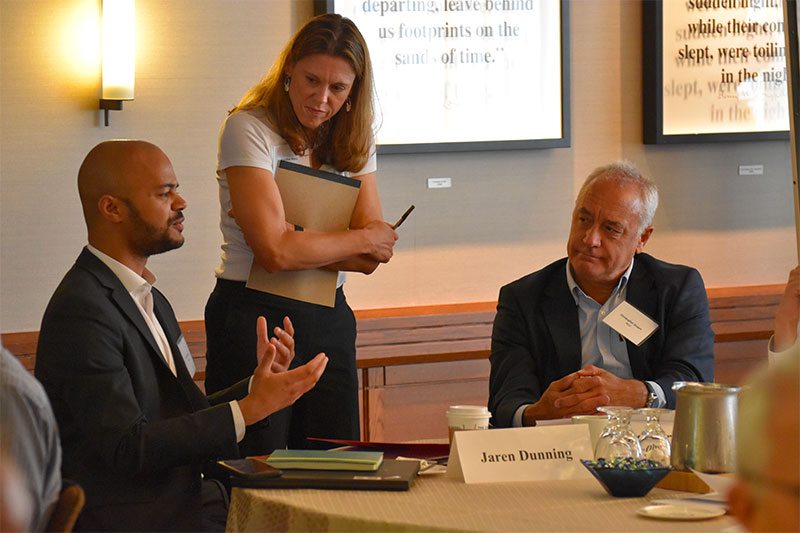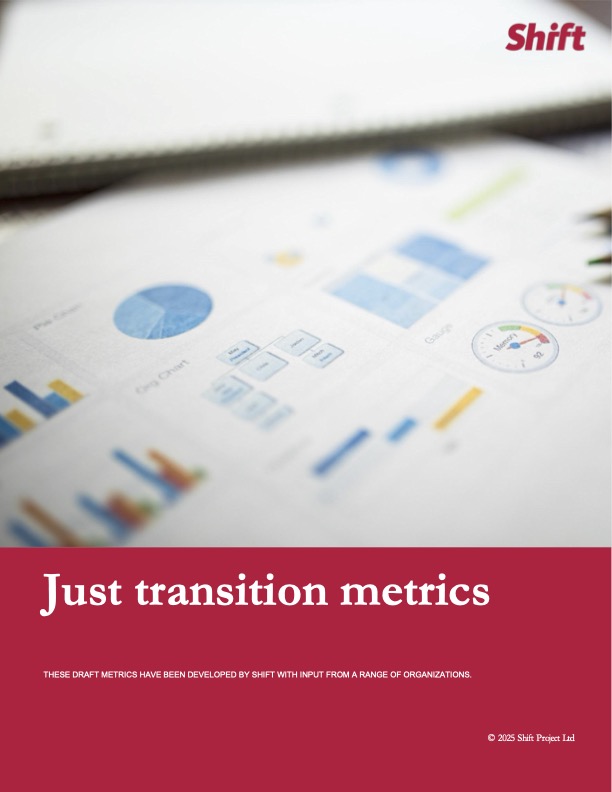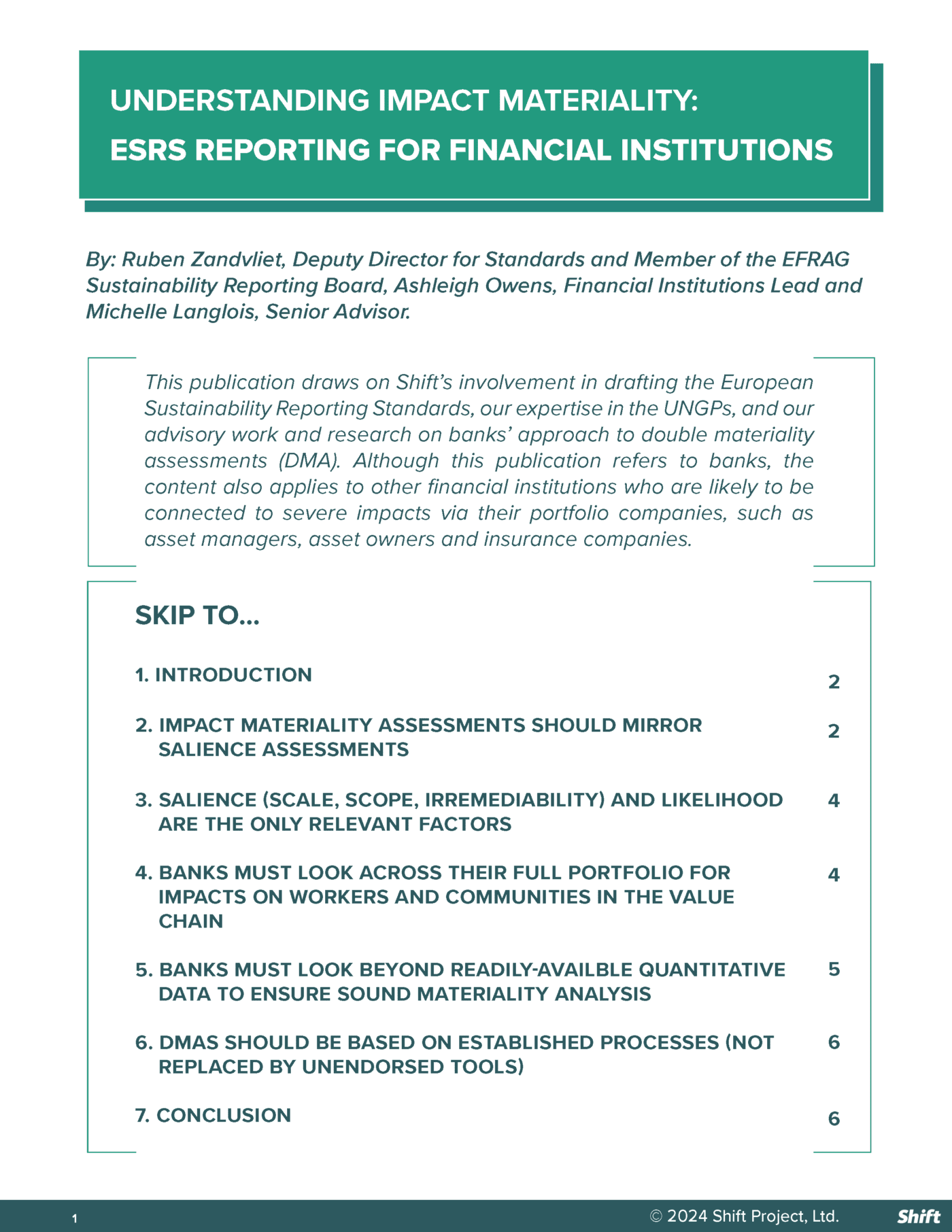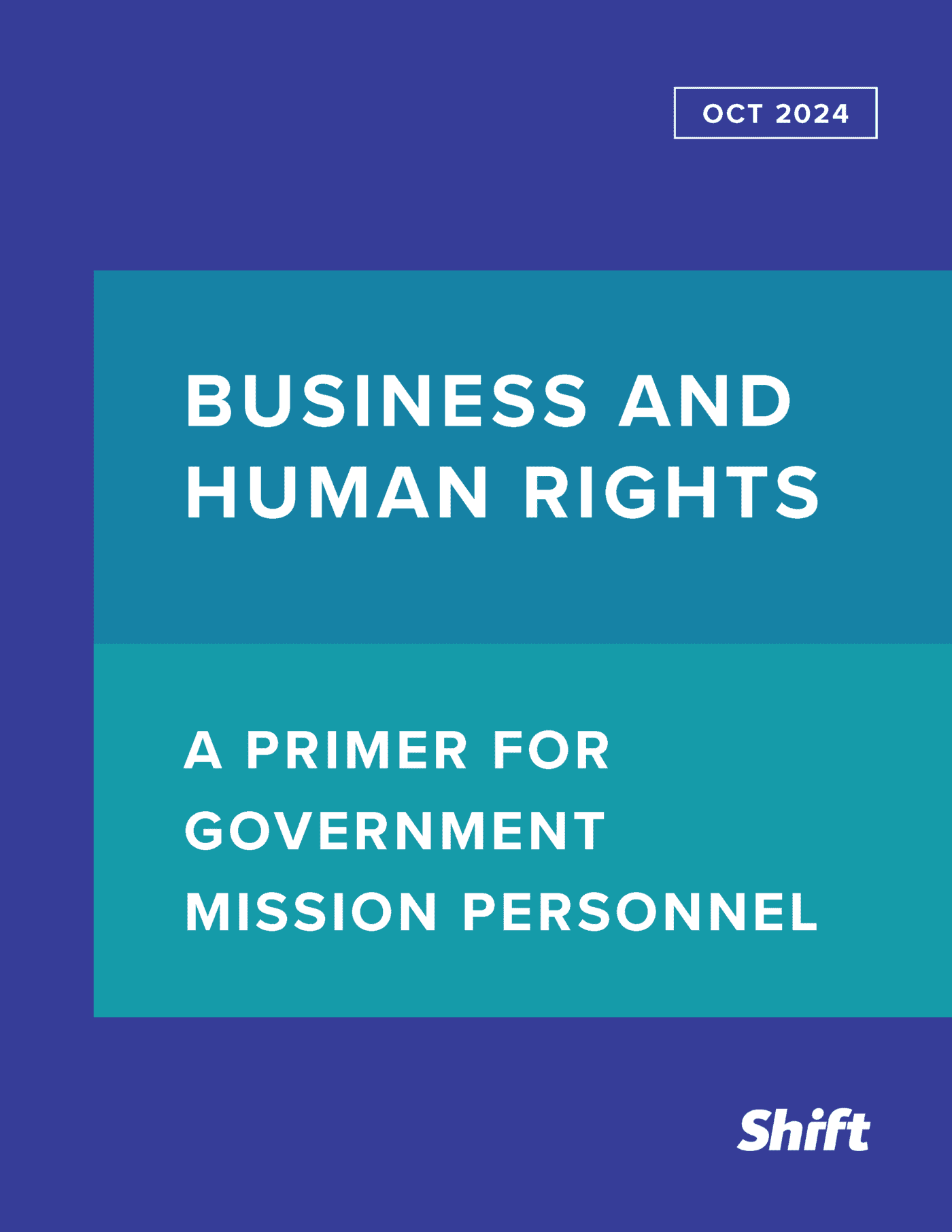It was a busy summer here at Shift.
We kicked it off in June with the 13th edition of our Business Learning Workshop. If you have been part of the Shift family for a while, you know how much value we place in the opportunity to engage more deeply with our business partners on a specific theme. The workshop is a unique space where all participants in our Business Learning Program – representing a range of industries – come together to discuss really challenging areas of implementation with the UN Guiding Principles. We make a tremendous effort to ensure that the workshop creates a safe space where companies can openly discuss their challenges, and we can learn together about what works in practice. For this past workshop, we decided to focus on stakeholder engagement – a theme we had previously focused on but realized there was much more to explore.
After two days of insightful discussions, role-plays and example sharing, I came back home thinking about my own list of takeaways from the workshop. I’ve found great value in referring to that list as I have continued to engage with businesses, financial institutions, and other stakeholders in the months that followed. So, here are my nine key takeaways from our discussion about how to consider stakeholder engagement from the perspective of the UNGPs, with practical steps that might help turn these insights into action.
- It is absolutely essential that we re-humanize due diligence.
Companies understand that they need to engage with affected stakeholders as part of their due diligence efforts. Yet many of them struggle with how to put this into practice – particularly given the scale and complexity of global value chains. Stakeholder engagement can easily become something we ‘have to do’ (and show that we have done).
Therefore, companies tend to rely upon more scalable approaches – engaging with policy level stakeholders close to home, proxy representatives to speak on behalf of affected stakeholders, or research conducted by others. ‘Affected stakeholders’ then becomes something abstract and amorphous – creating a distance between the company and the people who might be impacted by the company’s activities.
The result: We’ve lost the human element of human rights due diligence. Companies tend to forget that business and human rights is about actual people, whose everyday realities are affected by business activities. And it’s a lot harder to continue to tolerate exploitation of others when you’ve met them in person. So how can they close that gap and ‘re-humanize’ human rights due diligence?
To do: Don’t look at engagement as something to cross off your list. Instead, look across your due diligence processes: where and how are we as a business hearing directly from people who might be impacted by our activities? What are the one or two further opportunities you could build into your due diligence framework to hear more directly from affected stakeholders? - For just a minute, forget about scale.
At Shift, we see so many companies worried about scale, and we understand. You have tens or hundreds of thousands of business partners, with exponentially more stakeholders, and you cannot engage with all of them. Yet we have also seen the power that a single direct engagement between a company leader and an affected stakeholder can have in shifting company mindsets and attitudes, and the effect that this can then have in driving efforts to respect human rights in practice.
To do: As you develop your due diligence approaches or strategies, find opportunities for different leaders within the business – from the CEO on down – to engage directly with an affected stakeholder. No, you cannot do this at scale. But it may be the most significant step you can take. - Now think about more effective ways to get to scale.
While direct stakeholder engagement is preferable, the reality is that this can’t always happen, and certainly not at the scale and complexity of many companies’ global value chains. So, if companies have to rely upon second-hand engagement (through proxies and other third-parties), how can we ensure that these voices are coming through more effectively?
To do: Effective grievance mechanisms are one of many ways in which companies can reach scale with global value chains. When they work well, grievance mechanisms can provide a direct window into some of the concerns of affected stakeholders, their worries and their needs. Look at the effectiveness of grievance mechanisms at various points in your value chain. For particularly high-risk areas, how could you support stronger, more effective grievance mechanisms – either in your own operations or within the operations of value chain partners? - Measure quality, not quantity.
Most companies love quantitative metrics. Key performance indicators (KPIs) are the way in which many businesses measure success. But what are they measuring when it comes to stakeholder engagement? What can we really learn from the number of engagements you’ve had, or the number of people engaged?
To do: Instead of focusing on quantity, develop tools that assess the quality and effectiveness of your stakeholder engagement (and that of your value chain partners). Start measuring the extent to which stakeholder engagement is helping to shape and inform your human rights work. - Don’t outsource, but be ready to recognize where you might need help.
Stakeholder engagement is a powerful tool for building authentic, long-term relationships between companies and their stakeholders; it cannot simply be outsourced. That being said, there are specific skills and capacity required to engage successfully with different types of individuals, groups and communities. Effective stakeholder engagement may require understanding context, history, and the nuances of culture – in order to be fully sensitive to who your stakeholders are, what they care about, or how decisions get made. Many of these, sound more like the tools of an anthropologist than a business leader (which may explain why we have seen many extractives companies increasingly bringing people with these types of skill-sets in-house).
To do: Look at the capacity that you have in-house and the capacity that you need to successfully engage with stakeholders. Are there gaps in the skill-sets you have in-house? Who could you partner with to bridge those gaps, while continuing to own the process of engagement as a business? - Problem-solving is one of the boldest ways to transform a relationship.
Many companies have specific stakeholder relationships that are particularly challenging. There may be a history or a legacy of less constructive engagement, and perceptions may have hardened. How can businesses transform these dynamics? We’ve seen many examples where companies and stakeholders – who may not have previously been able to sit down in the same room together – find ways to work collaboratively on a specific crisis out of necessity. The company has the opportunity for action, rather than words, and in many cases, both sides are able to recognize the underlying intentions of each other and find value in the collaboration. Often, they are then able to leverage that into rebuilding their relationship.
To do: Look at the major issues that you are currently dealing with. What have you done, or not done, that might be contributing to a particularly challenging relationship with a stakeholder who is critical of you? Then reach out to that critical stakeholder, and invite them to collaborate in a different way, momentarily setting aside any historical baggage, to solve a specific problem together. - Stakeholder engagement is a critical component of remedy.
Remedy is not just about the company taking action to right a wrong. Often, the reason the impact occurred or escalated in the first place is because stakeholders felt marginalized or voiceless. In many cases, meaningful engagement with stakeholders can be the most important component of remedy, so that stakeholders can feel heard by the company. It is not just about addressing the impact, but changing the nature of the relationship that may have contributed to the impact occurring or escalating in the first place.
To do: When looking at an issue or a grievance, build in a component of meaningful direct engagement with the person or group on the other side. You might be surprised at the way that engagement can transform the situation. - Build a supportive environment to develop and/or strengthen effective channels of communication.
This one is particularly relevant to the workplace. Businesses often face challenges in knowing who to engage, who speaks for whom, and what is ‘enough’ engagement. Many of these challenges are addressed if workers have been able to organize freely and create their own credible representational structures. We often refer to freedom of association as an enabling right, because getting that right can help address so many other workplace rights. Likewise, it can enable more effective stakeholder engagement. Trade unions at the site level, and effective global framework agreements at the headquarters level, can not only help businesses meet their responsibility to respect these particular rights, but can also streamline engagement in the workplace.
To do: When you are looking to engage with workers, see how you can leverage existing representational structures. And where they don’t exist, try focusing on how to enable them, rather than finding alternative ways to engage with the workers. - It’s stakeholder engagement, not stakeholder management.
When I talk with businesses about particular stakeholder relationships, it often seems like they are trying to manage a potential reputational risk by engaging with certain stakeholders, rather than having a meaningful dialogue that informs their due diligence. It feels both transactional and tactical. This type of approach may be appropriate in some instances – but this is not what we mean by stakeholder engagement – and companies really need to differentiate this kind of approach from the kind of meaningful stakeholder engagement we know is essential.
To do: Look at your engagement approach, and differentiate those stakeholders you might be looking to manage, from those you are looking to engage.
I hope some, or several of these takeaways may have sparked your thinking in some way. And, ideally, have been some further inspiration to drive meaningful change. As for me, I am already looking forward to our next edition of the Business Learning Workshop in a few weeks in London. You can learn more about our Business Learning program here.

 By David Kovick
By David Kovick



